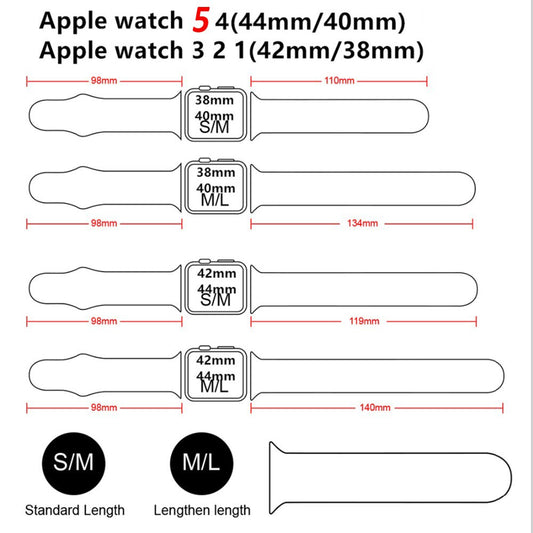Apple has been on the cutting edge of silicon design for years now, but they recently announced that their next generation of processors will be called Ibiza, Lobos and Palma. Details are scarce at this point, but we do know that these new chips will be manufactured using a 7 nanometer process by TSMC. What does this mean? We don't know yet! But it's exciting to think about what Apple might have up its sleeve with these new chips.
Apple has announced their new high-end chips: Ibiza, Lobos and Palma. These three processors are set to replace Apple's A12 Bionic and become the future of iPhone and iPad performance. Apple claims that these new chips will offer "improved battery life" as well as "new experiences." We've compiled all the information we know about these upcoming processors so you can see what they mean for your device!

The future of computing is looking brighter than ever for Apple users with plans to announce new Mac chips that are more powerful and energy efficient. Intel's processors may have been good enough when they first came out, but it looks like you'll never need an old computer again!
The next two generations of Mac chips are expected to succeed the M1—the first processor Apple designed in-house as it began moving away from Intel, according three people familiar with plans. Apple is about to release their third generation of Mac processors, which are code named Ibiza Lobos Palma. According three people with direct knowledge the projects these look like an especially big step up from what you can expect Intel shipping around that time.
Intel and Apple have been rivals for years, but now it looks like Intel may be in trouble. The company's performance is slipping as they've failed to keep up with Apple when it comes down to power-efficient chips that can provide top level performance at an affordable price point. The news of a possible shakeup within the tech industry came during October where two major players were seen duking out cryptographic algorithms on various platforms including Ethereum by miners bidding against each other using Ethers or another crypto currency called Zcash while testing how much processing capacity certain machines held over others.
They say it takes a Village to raise a child, but in this case we're talking about an entire village of people who have dedicated their lives to creating the next generation's technology. The silicon engineering group at Apple designs processors that go into iPhones and iPads--the A-series chip packages you'll find inside your favorite gadgets!

Intel's reign atop the computer processor world is coming to an end. In November of last year it introduced its first ever M1 chip, and now just last month they have improved upon this with even better versions that can be found in more products from Apple! There are no longer any Intel processors left aside from a couple Macs models so users won't need worry about compatibility issues anymore when upgrading or purchasing new computers because all will work seamlessly without anything being outdated quickly due merely thanks their advanced technology level compared against others out there currently available on shelves today.
Silicon engineers have many tricks they can perform to boost the performance of processors. These come with trade-offs such as increased power consumption and heat, though new design challenges exist in figuring out how silicon works best for electronics applications that require high frequencies or low energy using's which may not typically be thought about when designing circuits without these capabilities.
According to designer's reports, a die can be increased by as much at 100% when designing for silicon chips. The heart of these processors is made up from thick strands that contain transistors and it increases the number on each chip like cores within one big processor; allowing more tasks or calculations done all together instead of separately.
Silicon engineers are constantly looking for ways to increase the frequency of their chips so they can execute more instructions per second. With advanced manufacturing processes and smaller transistors, engineer's work is paying off in droves!

Apple has been steadily improving their first-generation Mac processors with each new design. The M1, Pro and Max all use a single die that's manufactured using 5 nm process technology while future models will continue to be improved upon in this area as well
The next generation of Apple's processors will be manufactured using an upgraded version 5-nanometer process, according to two people with knowledge about the company’s plans.
Apple has been working on its third-generation processors for quite some time now, and it seems like the company is about to take a huge leap forward with them. Some sources say that Apple's new chips will come in two die sizes; however there are also reports from people who claim they have seen four nanometer dies being used by Apple when developing these next-gen processors.
The Apple’s fastest processors currently contain 10 core chips on a single die, which could translate into 40 different computing cores for the processor with four dies. I should have known I was on the right track when they said that four times ten is forty. It’s not as simple math after all!

Apple is a company that takes the coding of its silicon seriously. The island name for each new processor has always been an intentional nod to where it came from, be it San Pené or Rhodes (to say nothing about Ibiza). And as if named after some ancient mariner's journey through rough seas and onto safe landings—Spanish locals know their canaries well- there are three major islands in this archipelago off mainland Europe: Palma de Mallorca on one side; Lobos Norte Island across from Portugal while Tenerife Sur lies most centrally between Africa/ America.
Follow us for more information and updates, wristwatchstraps.








